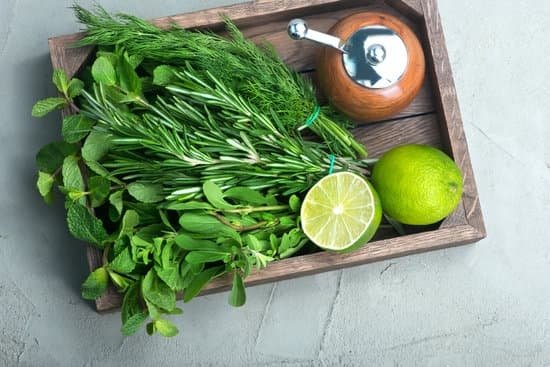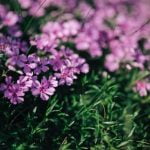Raised bed gardening is a popular method of gardening that involves planting in above-ground boxes or containers. This technique is known for its versatility, ease of maintenance, and ability to produce high yields in small spaces. In this article, we will explore the world of raised bed gardening planting ideas to help you create a thriving garden oasis in your own backyard.
One of the primary benefits of raised bed gardening is the control it offers over soil quality and drainage. By using raised beds, gardeners can customize the soil mix to suit the specific needs of their plants, ensuring optimal growth and health. Additionally, raised beds are elevated from the ground, leading to improved drainage which helps prevent waterlogging and root rot. These factors contribute to healthier plants and higher yields.
Moreover, raised bed gardens are particularly advantageous for individuals with physical limitations as they reduce the need for bending over or kneeling while tending to plants. The height of raised beds can be adjusted according to personal preference or accessibility requirements, making gardening more enjoyable and accessible for everyone. With this introduction to raised bed gardening, you’ll be well-equipped to embark on your own planting journey filled with innovative ideas and bountiful harvests.
Choosing the Right Location for Your Raised Bed Garden
When it comes to raised bed gardening planting ideas, one of the first and most critical decisions you will make is selecting the right location for your raised bed garden. The success of your plants depends heavily on factors like sunlight exposure, drainage capabilities, and overall accessibility for maintenance and harvesting. Here are some key considerations to keep in mind when choosing the perfect spot for your raised bed garden:
- Sunlight: Most plants require a minimum of 6 hours of sunlight daily to thrive, so choose a location that receives adequate sunlight throughout the day. Avoid areas shaded by buildings or trees that may impede plant growth.
- Drainage: Proper drainage is essential to prevent waterlogging and root rot. Select a site with good natural drainage or consider adding drainage materials like gravel at the bottom of your raised beds to improve water flow.
- Accessibility: Make sure your raised bed garden is easily accessible for watering, weeding, and harvesting. Consider proximity to water sources, pathways wide enough for wheelbarrows or tools, and sufficient space around the beds for maneuvering.
Once you have identified the ideal location for your raised bed garden based on these factors, you can move on to preparing the site and constructing your raised beds using suitable materials as discussed in earlier sections. It’s important to lay a strong foundation for your garden to thrive through proper planning and execution of these initial steps.
By carefully considering sunlight exposure, drainage capabilities, and ease of access, you set yourself up for success in implementing various raised bed gardening planting ideas effectively.
Remember that each plant has specific light and water requirements, so be mindful of how these elements factor into plant selection based on your chosen location. With proper planning and consideration of these crucial aspects, you can create a thriving raised bed garden filled with an array of fruits, vegetables, herbs, and flowers that will flourish in their designated growing spaces.
Types of Raised Bed Materials
When setting up a raised bed garden, one crucial decision to make is the choice of materials for constructing the beds. Each material option comes with its own set of pros and cons, affecting factors like durability, aesthetics, cost, and sustainability. Here are some considerations to keep in mind when selecting between wood, metal, stone or recycled materials for your raised bed gardening project:
- Wood: One of the most popular choices for raised bed construction is wood, particularly cedar or redwood. These types of wood are naturally resistant to rot and decay, making them durable options for long-term use in the garden. Wood also provides good insulation for plant roots against temperature fluctuations. However, it is important to avoid treated wood that may contain harmful chemicals that can leach into the soil.
- Metal: Metal raised beds offer a sleek and modern look to the garden space. They are durable and long-lasting options that won’t rot or degrade over time. Metal beds can also warm up quickly in the sun, which can be beneficial for extending the growing season. On the downside, metal can heat up too much in hot weather, potentially damaging plant roots if not properly insulated.
- Stone: Stone raised beds provide a charming rustic aesthetic to a garden and are incredibly sturdy once properly installed. They have great heat retention properties which can benefit plants in cooler climates. However, stone can be heavy and more challenging to work with during construction compared to other materials. Additionally, stone may retain heat too well in hotter regions causing overheating issues for plants.
- Recycled Materials: Using recycled materials such as old tires, barrels, or pallets for building raised beds is an eco-friendly choice that reduces waste and repurposes items otherwise destined for landfills. These options are often budget-friendly and add a unique touch to the garden design. Nevertheless, it’s essential to ensure that any recycled materials used are non-toxic and safe for growing edible plants.
Soil Mix for Raised Bed Gardening
Raised bed gardening relies heavily on the quality of the soil mix used, as this is where your plants will be rooted and draw their nutrients from. It’s essential to create a nutrient-rich soil blend that provides a healthy environment for your plants to thrive. A good soil mix for raised bed gardening should be well-draining, fluffy, and full of organic matter to support plant growth.
One popular recipe for a successful raised bed garden soil mix is called the “Mel’s Mix”, popularized by Mel Bartholomew in his book “Square Foot Gardening”. This mix consists of one-third compost (for nutrients), one-third vermiculite (for aeration), and one-third peat moss (for moisture retention). This balanced combination creates an ideal environment for plant roots to establish themselves and access the necessary nutrients for healthy growth.
When creating your own soil mix for raised bed gardening, it’s important to consider the specific needs of the plants you intend to grow. Some plants may require more acidic soil, while others thrive in alkaline conditions.
Testing your soil pH and adjusting it accordingly can make a significant difference in the success of your garden. Additionally, adding organic fertilizers or amendments like bone meal, fish meal, or kelp meal can further enhance the nutrient content of your soil mix.
| Soil Mix Components | Ratio |
|---|---|
| Compost | 1/3 |
| Vermiculite | 1/3 |
| Peat Moss | 1/3 |
Ideal Plants for Raised Bed Gardening
Raised bed gardening offers a variety of benefits, including better soil drainage, improved aeration, and easier weed control. When considering which plants to grow in your raised beds, there are several factors to keep in mind. Vegetables are popular choices for raised bed gardening due to their versatility and productivity. Some great options include tomatoes, peppers, lettuce, and carrots. Herbs also do well in raised beds and can be easily accessed for culinary use.
In addition to vegetables and herbs, flowers can add beauty and color to your raised bed garden. Marigolds, zinnias, and petunias are excellent choices that not only look lovely but also attract beneficial insects. Fruits such as strawberries and blueberries can also thrive in raised beds, providing you with a delicious harvest. It’s essential to consider the space requirements of each plant when planning your raised bed garden layout.
When selecting plants for your raised beds, think about their compatibility with one another through companion planting. Certain plants can benefit each other by repelling pests or attracting pollinators. For example, planting basil near tomatoes can help improve the flavor of the tomatoes while deterring pests. Consider incorporating companion planting strategies into your raised bed gardening planting ideas to maximize the health and yield of your crops.
| Plants | Benefits |
|---|---|
| Vegetables (tomatoes, peppers) | Versatile and productive |
| Herbs (basil, parsley) | Culinary use and fragrance |
| Flowers (marigolds, zinnias) | Add beauty and attract beneficial insects |
| Fruits (strawberries, blueberries) | Delicious harvests |
Companion Planting in Raised Beds
Companion planting in raised bed gardens involves strategically pairing plants to maximize space utilization, deter pests, and enhance each other’s growth. By choosing the right combinations of plants, you can create a harmonious and mutually beneficial garden environment.
One classic example of companion planting is the Three Sisters planting method, which involves growing corn, beans, and squash together. The corn provides support for the beans to climb, while the squash acts as a living mulch, shading the soil and suppressing weeds.
Benefits of Companion Planting
Companion planting offers several advantages for your raised bed garden. By selecting plants that complement each other’s needs, you can help reduce the risk of pest infestations and diseases. Some plants emit natural compounds that repel harmful insects or attract beneficial predators. Additionally, pairing certain plants together can improve soil health by enhancing nutrient uptake and reducing nutrient competition.
Popular Companion Planting Combinations
There are numerous tried-and-tested companion planting combinations that work well in raised bed gardens. For instance, planting basil near tomatoes can help improve tomato flavor and repel pests such as aphids and hornworms. Marigolds are often interplanted with vegetables like cucumbers and squash to deter nematodes in the soil.
Mixing herbs like dill or cilantro with brassicas like cabbage or broccoli can also help ward off caterpillars and attract pollinators. Experimenting with different plant pairings based on their mutual benefits can lead to a more productive and visually appealing raised bed garden.
Incorporating companion planting concepts into your raised bed gardening setup can not only increase crop yields but also contribute to a healthier ecosystem within your garden space. By taking advantage of plant interactions and synergies, you can create a more sustainable and biodiverse environment for your plants to thrive. Keep these raised bed gardening planting ideas in mind as you plan out your garden layout to reap the benefits of companion planting in your own backyard oasis.
Seasonal Planting Guide
Spring Planting
In the spring, your raised bed garden is ripe for planting a variety of vegetables and flowers that thrive in cooler temperatures. Consider planting early crops such as leafy greens like lettuce, spinach, and arugula. Root vegetables such as carrots, radishes, and beets also do well in the spring. Additionally, you can add colorful flowers like pansies and snapdragons to brighten up your raised bed garden.
Summer Planting
As the weather warms up in the summer months, your raised bed garden can be filled with heat-loving plants. Tomatoes, peppers, cucumbers, zucchini, and eggplants are popular choices for summer planting in raised beds. Herbs like basil, mint, and oregano thrive during this time as well. Don’t forget to include some flowering plants like marigolds and sunflowers to attract beneficial insects to your garden.
Fall Planting
Fall is a great time to plant cool-season crops in your raised bed garden. Vegetables like broccoli, cauliflower, kale, and Brussels sprouts can be planted in late summer for a fall harvest. Root vegetables including onions, garlic, and potatoes also do well when planted in the fall. Consider adding some ornamental cabbage or mums to add a pop of color to your fall garden beds.
By following this seasonal planting guide for your raised bed garden throughout the year, you can enjoy a bountiful harvest and a beautiful display of flowers from spring through winter. Remember to rotate your crops each season to maintain soil health and prevent disease buildup. With these raised bed gardening planting ideas in mind, you can create a productive and visually appealing garden space that will bring joy all year round.
Raised Bed Garden Design Ideas
In conclusion, raised bed gardening offers a multitude of benefits for both beginner and experienced gardeners alike. By providing better soil drainage, increased accessibility, and improved soil quality, raised bed gardens can significantly enhance the success of your plants.
When considering the layout and design of your raised bed garden, there are limitless possibilities to explore. From creative layouts that maximize space to vertical gardening options that add visual interest, you have the opportunity to create a unique and visually appealing garden space.
When implementing raised bed gardening planting ideas into your design, consider the types of plants that thrive in this environment. Vegetables like tomatoes, peppers, and lettuce, along with herbs such as basil and parsley, are excellent choices for raised beds. Additionally, flowers like marigolds or petunias can add color and beauty to your garden while also attracting beneficial insects. Fruits like strawberries or blueberries can also do well in raised beds with proper care.
To ensure the long-term success of your raised bed garden, remember to rotate crops seasonally and practice companion planting techniques to promote plant health. By following a seasonal planting guide tailored to your specific region, you can maximize the productivity of your raised bed garden throughout the year.
With careful planning and attention to detail, your raised bed garden will not only be functional but also a stunning focal point in your outdoor space. Embrace creativity and experimentation in your design process – it’s all part of the joy of cultivating a thriving oasis right at home.
Frequently Asked Questions
What Is the Best Thing to Plant in a Raised Garden Bed?
The best thing to plant in a raised garden bed depends on your climate, soil quality, and personal preferences. Generally, vegetables like tomatoes, lettuce, peppers, and herbs are popular choices due to their productivity and compact growth.
What Plants Grow Well Together in a Raised Bed?
Plants that grow well together in a raised bed should complement each other in terms of nutrient needs and space utilization. For example, planting carrots with onions or tomatoes with basil can benefit both plants by deterring pests and maximizing limited space efficiently.
What Not to Plant in Raised Beds?
There are certain plants you should avoid planting in raised beds to prevent potential issues. Plants that require deep roots or extensive spreading like potatoes or watermelon may not thrive well in the confined space of a raised bed. Additionally, invasive plants like mint should be avoided as they can take over the entire bed.

Welcome to my gardening blog! I am passionate about plants and enjoy sharing my knowledge and experiences with others. In this blog, I will write about everything related to gardening, from tips on how to get started to updates on my own garden projects.





